All the Pu’er in Yunnan—Part 2, A Tea Factory in Photos
April 17th, 2013

It’s funny what can happen when an American shows up in a relatively rural place like Xishuangbanna. Much of the time I’m just ignored or treated like someone whose sole purpose in life is to walk around hearing “Hello” from every child in a ten-mile radius. But once in a while, some low-level government official gets their hands on me and decides that as an American, I must be important and, furthermore, must have the power to make their town/region/business popular with everyone in my country.
Such was the case on my most recent trip to pu’er country. On the last day of my trip, I met up with a man who ran a tea plantation owned by a friend of a friend in Beijing. I had told him I was interested in tea and would love to see how he grew pu’er, and he invited another friend—a nice businessman who just happened to be one of the region’s chief government economists—to join us. Before I really knew what was happening, I was dressed in a hairnet, a lab coat, and blue plastic shoe-covers, and I was enjoying a personal tour of one of the biggest pu’er tea factories in China.
While the best pu’er is produced by small-scale growers like the Long family on Nannuo Shan, the vast majority is made in much more prosaic, industrial surroundings. The pu’er-making process I saw at the factory involved the same steps I had seen on the mountain, but they were carried out in a much more regimented, high-tech fashion.
Making Pu’er the Factory Way:
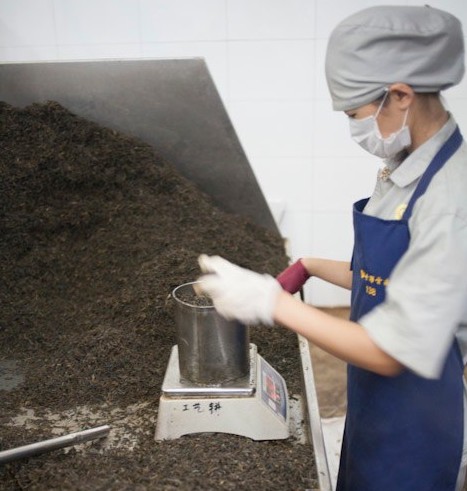
First we visited a room where the cooked tea was formed into pu’er’s iconic cakes. The tea was portioned out on a scale, so each cake would be exactly the same size.
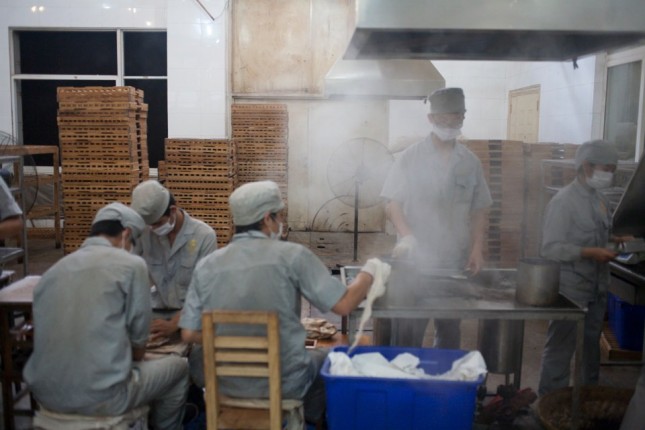
Then each batch of tea was steamed briefly. This technique is a relatively new addition to the process of making pu’er. It oxidizes the tea so that it instantly develops the kinds of rich flavors that it would normally take years of aging to achieve (though even I can tell that tea “aged” this way doesn’t taste nearly as good as the real thing).

The steamed tea is then tied into cloth bags,
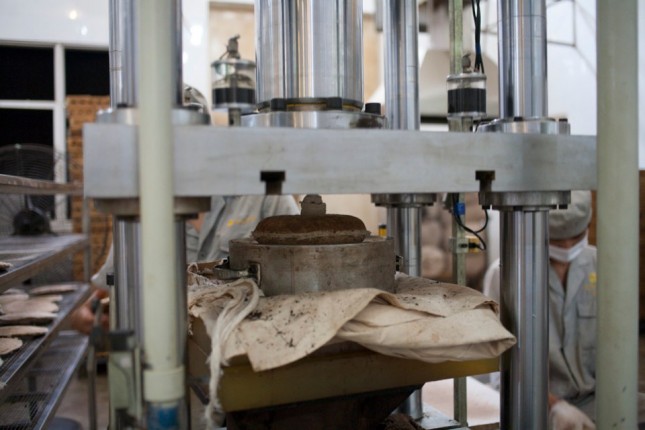
And pressed into round cakes with a dimple in the center,

Or pressed with a metal die
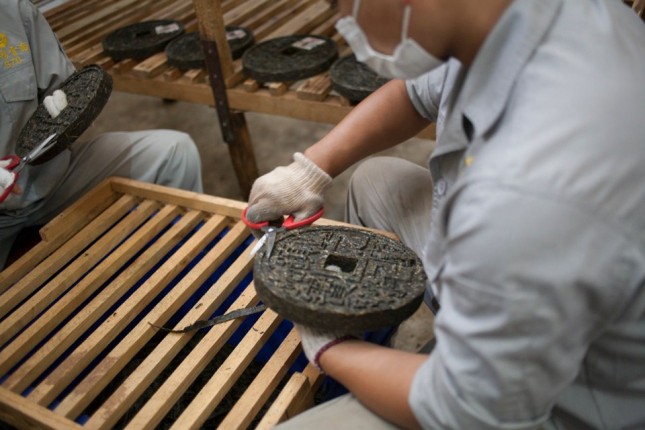
to make cakes embossed with good wishes. (The worker above is trimming off the excess tea that slipped over the side of the die.)
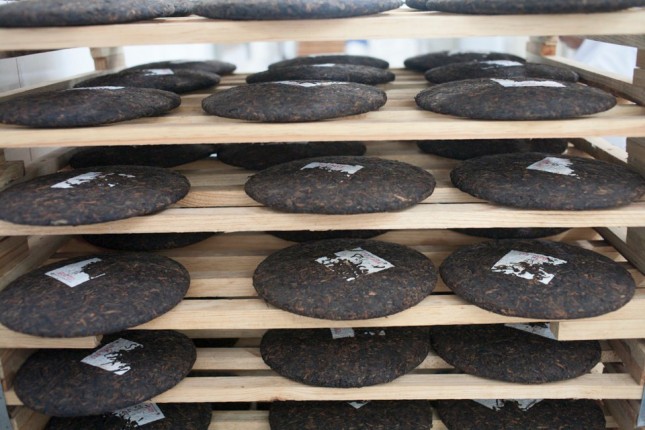
The finished cakes are dried and then wrapped in thin paper

And bundled into packages containing seven cakes each. A group of seven cakes is called a “tong.”
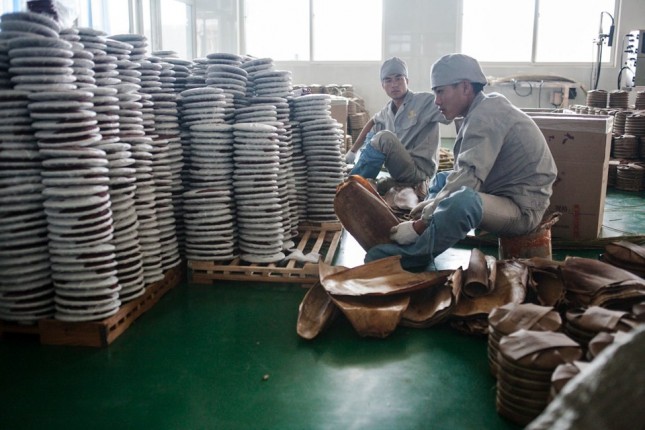
The packaging for the tongs is made from the bark of the region’s banana trees, and each one is formed by hand by workers who tie the bark into place with twine.
Once we had seen the industrial part of the tea-making process, we were shown into a room where the most intricate, hands-on work was done—the tea sorting room.

Here, dozens of Dai women in aprons, hats, and paper masks sort the tea that will eventually be processed into cakes. They comb through the tea, one basket at a time, to separate the long tea leaves (which are more valuable) from the shorter tea leaves.
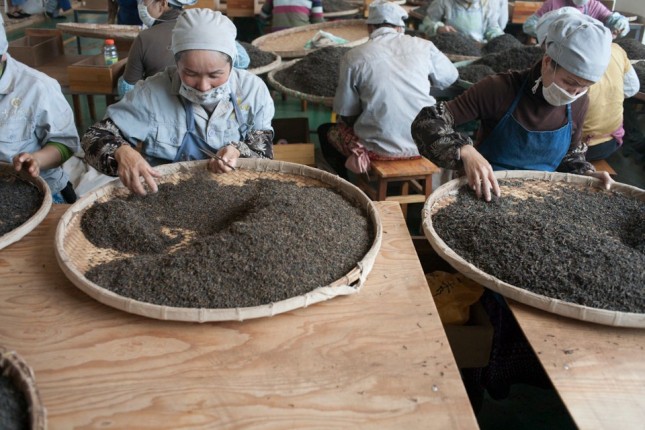
First, the women use their fingers and long silver tweezers to separate the different sizes of tea leaves.

Then another woman checks their work by lifting handfuls of tea into the air and letting it fall slowly back onto the basket, looking at the uniformity of the leaves as they fall.

The work is mind-bogglingly intricate.
Lastly, we were shown into the factory’s offices, where we were given tea to taste and a handful of brochures (all in Chinese) about the company’s history and corporate philosophy. In an adjacent room, Josh found a tea taster doing quality inspections. Not a bad job, if you ask me.
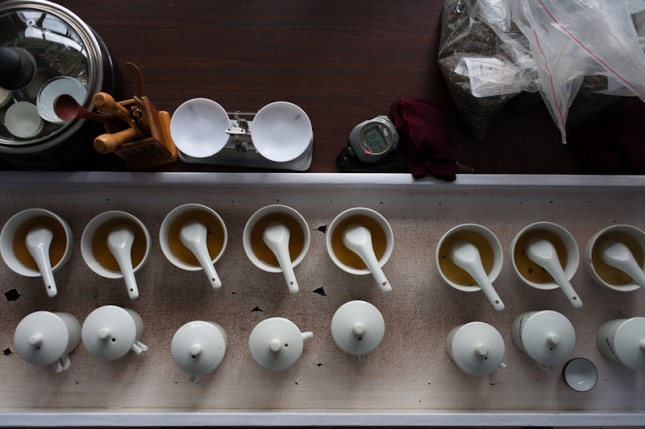
Photos: Josh Wand



